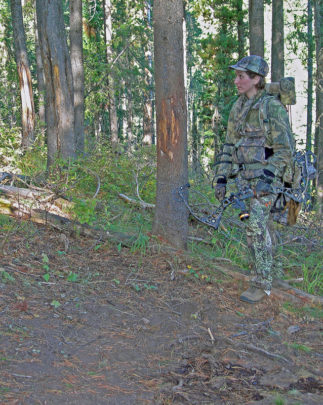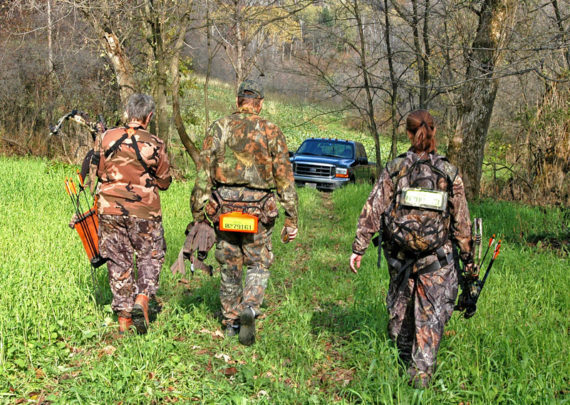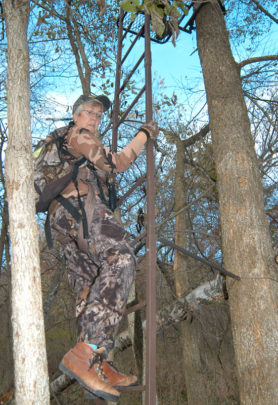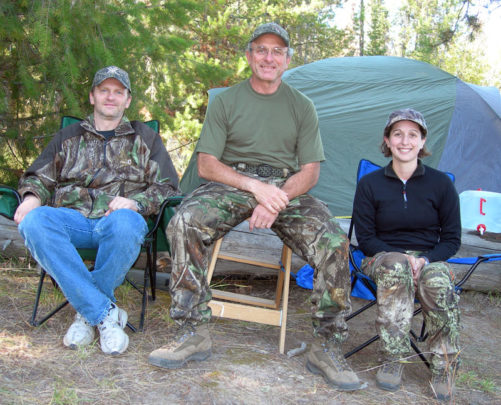Recent hunting-license sales in Wisconsin suggest the state is getting little benefit from its Legislature’s experiment to increase participation by deeply discounting fees for first-time hunters.
Starting in 2012, new hunters and those who haven’t bought a license for 10 years or more pay $5 for deer and small-game licenses instead of the standard $24 and $18, respectively. Initially, the discounts might have worked, because in 2012 gun-license sales increased 2 percent to 634,821 and archery licenses increased 3.3 percent to 263,860. Those figures fell only slightly in 2013.

Millennials are an increasingly important segment among the hunting population.
In 2014, however, gun-licenses fell 4 percent to 609,779, their lowest sales since the Wisconsin Department of Natural Resources sold 589,590 in 1976 – nearly 40 years before. In contrast, archery-deer licenses rose 3.4 percent to a record 275,417 in 2014, likely because the Legislature legalized crossbows for all archers.
And during 2015, gun- and archery-deer license sales were up about 1.7 percent from 2014, which is neither inspiring nor alarming. Most of the increase was caused by an increase in gun-license sales, while archery and crossbow sales were essentially flat. Therefore, we should acknowledge that Wisconsin’s $19 discount has not spurred a license-buying frenzy for deer hunting, and cost the DNR’s wildlife-management coffers $666,750 in 2014 alone.
That’s because when the 2014 gun season opened, Wisconsin had sold 18,973 first-time gun- deer licenses and 16,119 first-time archery deer licenses, each at the $19 discount. Granted, some of those first-time buyers wouldn’t have bought the full-price license, but a DNR study of first-time adult buyers in 2012 found few knew their cost had been discounted to $5.
We should also note that a research project by the DNR and University of Wisconsin-Madison in 2012 projected the 2014 and 2015 results fairly accurately. The study was completed before the Legislature slashed the fees, and its results were based on demographics about the state’s hunting population from 2000 to 2009.

Wisconsin discounts its $24 deer hunting licenses by $19 for first-time hunters, but the $5 price tag has done little to boost hunting participation.
The joint research project by Richelle Winkler (UW) and Keith Warnke (DNR) predicted deer hunter numbers within 1,000 of the actual 2014 license sales. The study predicts a continued slide to below 510,000 resident gun-deer hunters during the decade ahead.
Despite those sobering numbers, let’s concede four years is a relatively short time to pass final judgment on the price reductions. The DNR initially did little to market the discounts, and in 2015 tried to promote them through print and radio advertising, and social media.

Female participation in Wisconsin hunting steadily declines as a percentage of each age group for those born between 1956 and 1976.
That’s great, but this effort will require new ways to make hunting more accessible to “millennials,” people born between 1980 and 2000. Warnke, the DNR’s “Learn to Hunt” coordinator, said millennials became the largest age group in Wisconsin’s deer-hunting population when they passed baby boomers in 2011.
“Millennials are now our society’s largest group, but they don’t participate in hunting at the same rates as baby boomers,” Warnke said. “Meanwhile, the boomers are aging and dropping out of the hunting population. Their losses wouldn’t be so noticeable if more millennials started hunting. In business terms, the hunting community leaves a lot of money on the table by not engaging more millennials.”
Warnke said millennials represent a great opportunity for hunting, much as digital cameras once did for Kodak. “People forget that the driving force in digital photography was a Kodak employee who Kodak ignored,” Warnke said. “Kodak didn’t embrace change, and look what happened to it. We can’t afford to ignore millennials, especially when so many of them are open to hunting, including females.”
Warnke said half the millennials in adult “Learn to Hunt” programs are young women. That trend is also apparent in DNR license sales. In 2006, females made up 7.66 percent of the state’s roughly 645,000 gun-deer hunters. By 2014, female participation accounted for 10.6 percent of gun-hunters.
Meanwhile, female participation steadily declines as a percentage of each age group for those who produced the millennials – late baby boomers and early “generation X” members. Females in this group, roughly those born between 1956 and 1976, ranged from 8.4 percent to 5.6 percent of each age group in 2014.

Hunters from the baby-boomer generation are leaving the hunting community at increasingly faster rates, and millennials aren’t making up for the losses.
Notice, too, that participation rates among female millennials began growing long before lawmakers cut license fees for first-time hunters.
We can do better. Gimmicks don’t drive social change.

 By
By 



